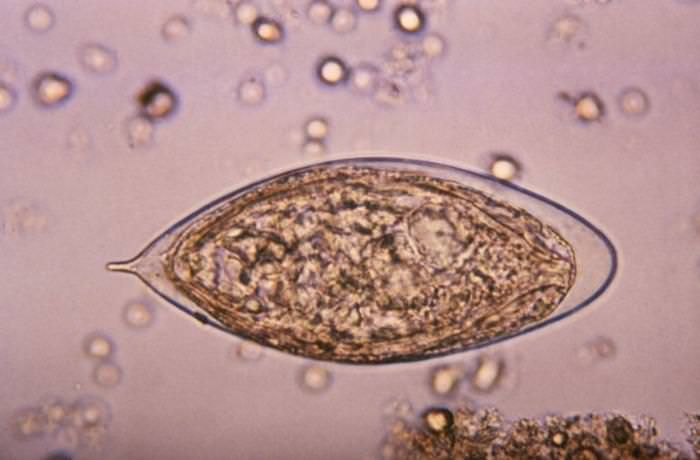Schistosomiasis Significantly Reduced with Safe Water Supplies
Published on by Water Network Research, Official research team of The Water Network in Academic
The increased supply of safe water in a rural African community has significantly reduced the chances of children contracting a parasitic disease, according to new research in eLife .
The study, carried out in a community in rural KwaZulu-Natal, South Africa, demonstrated that increased provisions of safe water over a period of seven years have led to an eight-fold decrease in the risk of children becoming infected with urogenital schistosomiasis. This impact is substantially greater than previous results have suggested.

Schistosoma haemotobium egg, Source: Wikimedia Commons, Public Domain
Schistosomiasis is a chronic parasitic disease caused by blood flukes of the genus Schistosoma. These parasites are transmitted by snails that live in freshwater environments contaminated by Schistosoma eggs. Urogenital schistosomiasis affects both men and women who can pick up the infection from agricultural, domestic and occupational activities that expose them to infected water.
“Recent work estimates that sub-Saharan Africa could lose $3.5bn of economic productivity every year as a result of schistosomiasis and soil-transmitted worm infections, which is comparable to the 2014 Ebola and 2015 Zika epidemics,” says lead author Frank Tanser, Senior Faculty at the Africa Health Research Institute and Professor at the University of KwaZulu-Natal.
“One of the main interventions to control schistosomiasis is the provision of safe water to limit contact with infected water bodies and break the cycle of transmission. But to date, a rigorous measure of the impact of safe water supplies on schistosomiasis is lacking.”
To understand this impact, Tanser and his team undertook comprehensive demographic and health surveys in a large rural population in KwaZulu-Natal over a seven-year period.
An average of 10,267 households took part in each of these surveys, which asked participants to specify the most often used source of drinking water in their home. Households were deemed to have access to safe water if they reported their most common source to be piped water delivered directly to the home or from a public tap.
At the end of the survey period, the researchers then took urine samples from primary school children to determine the prevalence of urogenital schistosomiasis, and found that 353 participants out of 2,105 – or 16.8% – had the infection.
Read full article: OutbreakNews
Media
Taxonomy
- Treatment
- Treatment Methods
- Sanitation
- Water & Sanitation
- Sanitation & Hygiene
- Sanitation & Hygiene
- water treatment
- Sanitation and Hygiene